Thinking about installing solar geysers for your home or business? Moving to a more sustainable operating system comes at a cost. But is it worth it? This article reviews the different system types, their expected outcomes, and costs to determine which is the best one to use.
Table of Contents
What is a Solar Geyser?
A solar geyser is a sun-powered water heating system (heat pump) that is generally installed on rooftops. They are heated directly or via light-concentrating mirrors and can be independent systems or part of a hybrid system (using gas or electric heaters).
How do Solar Geysers work?
There are two distinct actions of a solar system that must be considered when looking for the “right one”, water heating and water flow.
Water Heating
The two main ways in which water is heated inside a solar geyser system is via a direct system or indirect system.
- Direct System: This is the most basic or simple system. In summary, the water that is inside the collection tank is heated directly from the sun.
- Indirect System: An indirect system uses a Heat Transferring Fluid (HTF), typically an anti-freeze such a propylene glycol to heat the water indirectly. The benefit of this system is that the HTF is the material that gets heated by the sun, it then transfers the heat to the water, acting as a “middle man”. The HTF is much more stable under extreme temperatures than water itself i.e. doesn’t boil/freeze as easily as water does.
Water Flow
There are two main ways in which water flows through a solar geyser system, a passive flow or active flow.
- Passive Flow: These are the most basic systems that rely on the difference in heat (caused by the sun) to drive a movement. Ever heard the term “hot air rises”, that’s actually a process called convection. When touching particles have a temperature difference it creates natural movement. In the case of air, once the hot air rises it “pulls” in cooler air to replace it. This is essentially how wind and currents occur naturally around our planet.
- Active Flow: This is where water is actively “pumped” using a pump system. Pumps can be electric or gas driven. It creates a lot more control over the water flow. This system usually combines safety controls and flow meters.
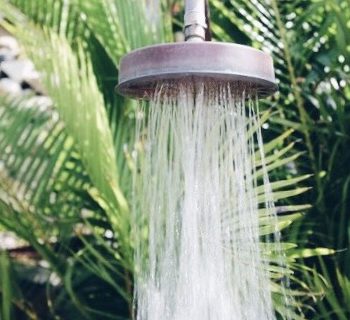
How effective are Solar Geysers?
The most important part of a solar geyser system is heat containment efficiency. Once the water is heated (by the sun) it begins to lose the heat through convection and radiation, in an attempt to get back to an equilibrium state.
In order to combat the heat loss, insulation is used to contain and get the most out of the heating process. While many tanks can be stainless steel on the outside, they are often a mixture of components to trap heat through layering.
Can they burst?
Both solar and electric water heaters are required by law to have a fail-safe mechanism (temperature/pressure release values). This means that they cannot overheat/explode if they are purchased and installed legally. Purchase from a certified dealer and install using a certified contractor.
Types of Solar Panels Used
The two main types of solar “panels” used in a solar geyser system are:
- Flat Plates
- Tubes (Excavated Tube Collectors or ETC)
There are pros and cons to both systems and both will be better suited for different locations and weather types.
Flat Plates
These are the “typical” looking flat solar rectangles with a tempered glass cover. Water or the HTC is typically pumped through small pipes inside the solar plates to heat the liquid.
Flat Plate collectors are generally better for areas of high/constant sunlight
Excavated Tube Collectors
Glass tubes can be used as a replacement for the plate. The tubes are generally better at reducing heat loss. While they are less efficient at collecting heat per square area, they are generally better at storing the heat that does get collected.
Tubes are generally better for areas with inconstant sun/ more cloud cover
Do Solar Geysers save electricity?
The short answer is yes. Solar power is essentially free (once the system is installed). That means that the electricity you would have used to heat a typical water heater system (using electric heating elements) is not required.
Do Solar Geysers work at night?
On a sunny day, water will be heated and stored in your solar geyser system. Depending on the holding capacity of your system, and the quality of insulation, you may be able to retain more than enough hot water to use during the night.
For example, a “typical” shower uses approx. 1 liter (2 gallons) per minute. If a family of four each have an 8-minute hot shower that’s 32l or 64 gallons of hot water used. Therefore, as long as you have enough water left in your storage tank at night, you can all have a hot shower.
Most modern solar systems have a backup
Without sunlight, the solar heater will not heat the water. However, many modern systems have a “backup”. This is where they are also connected to an electric or gas heating system which can be turned on in the case the solar-heated water runs out.
Is it economical to have a backup?
According to Florida Solar Energy Center, a family of 4 using a solar water heater with a backup element could save $200-$300 a year in lower water heating costs.
Can Solar Geysers work during the Winter?
Yes, they can. However, they may not be quite as efficient due to:
- Heat loss
- Reduced sunlight
In order to compensate for this antifreeze and good insulation can be used. Though, if there is not enough sunlight the water simply won’t heat up. In this case, it is best to have a backup system in place.
Solar geysers should be considered electric/gas offset heating. This means that not ALL of your hot water would be expected to come from the solar itself.
Depending on the weather and conditions you could expect up to 80% or more during summer months with as little as 10% of your hot water coming from solar doing harsh winter months.
What size Solar Geyser do I need?
It will depend on your expected outcome and how much water you plan to use on a daily basis. For a typical house, a 200 liter (400 gallons) collection system is usually enough.
In order to heat up this sized tank, you would need a solar panel on your roof approximately two square meters.
How much does a Solar Geyser cost?
Solar Geyser prices can vary significantly depending on what country you are in. Things to consider include:
- Cost of the solar geyser unit itself
- Installation costs
- Government rebate or subsidy (as an incentive to switch to solar)
Some examples of prices include (for system setup of a typical house):
- South Africa (14,500 ZAR)
- Australia (5,000 AUD)
- UK (5,000 GBP)
- USA (5,000 USD)
However, prices can vary significantly within countries, and even companies deepening on what kind of setup you choose. In South Africa, you can pay as little as R3,323 for a 100L Low-pressure up to R19,441 for a top of the range 200L High-pressure Solar Geyser.
Where to buy a Solar Geyser?
Solar geysers can be purchased in many large hardware stores or specialty stores. However, nowadays many can be purchased online. You can even find them on Amazon.
Where to buy in South Africa
- Kwikot has a big range of domestic solar geyser options
- Sustainable Co has a variety of different brands to choose from
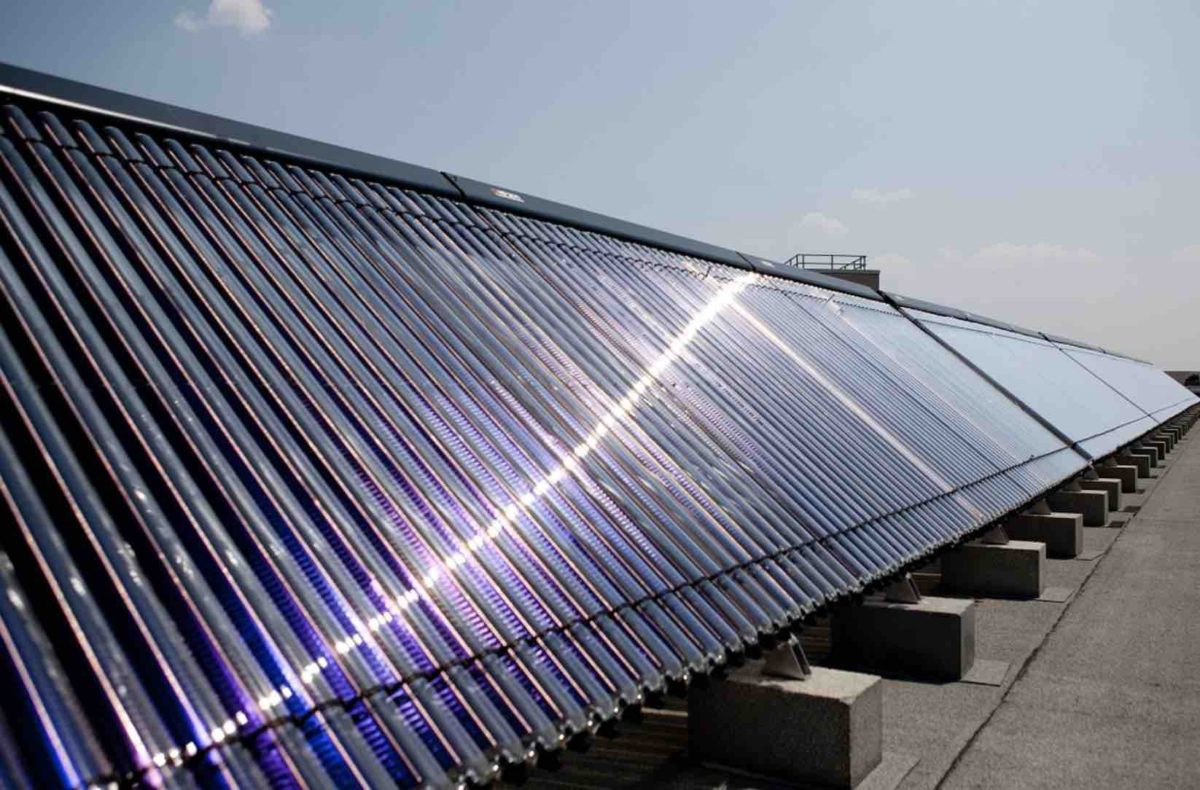
How to choose the right solar geyser?
Here are the main elements that you should look for when choosing your solar geyser. Make sure to read the specifications for each unit. These are the key ones to lookout for.
Tank Size (l or gallons)
This is usually the first thing to look for. The bigger the tank, the more hot water you will get.
- In contrast, the bigger the tank the more energy you need to heat it up
- Typical solar geyser tanks come in 100, 200, and 300 liter sizes.
- Based on “typical” daily water use per person of 50litres
Therefore the size you would be looking at for number of people would be:
- 1 to 2 people = 100L
- 2 to 4 people = 200L
- up to 6 people = 300L
Pressure (kPa)
There are two types of pressure rating
- Low pressure system
- High pressure system
Low pressure system
This is where the water tank sits up on the roof and water is gravity fed into the house.
Pros
- The benefit of this is lower cost and simplicity
- It can be used without electricity (for off grid setups)
Cons
- Whole system will not work if one heating element breaks
- Doesn’t connect into modern plumbing systems well (with high pressure). New direct line needed to be installed.
High pressure system
This uses a pump to push water through the system.
Pros
- Higher water pressure
- The water collection tank can be located next to or under the house
Cons
- More expensive that low pressure
- Reliant on electricity for pump
Element Rating (kW)
The efficiency rating is important for your level of heating. The more powerful, the more the water can be heated (to higher temperatures).
If you like your shower steaming hot, you will want a greater kW rating. However, the higher the rating, the higher the cost.
As a general rule: 4 kWh can heat up a 200l by approx. 17 degrees in temperate weather.
Collection Type
Choosing the solar collection panel type is based mostly on your locality.
- Pick the flat panel type: if you live somewhere that gets a lot of sunlight and is relatively low lying (not mountain)
- Pick the tube style: if you live somewhere with more cloud cover or higher altitude as these are generally better at insulating the heat
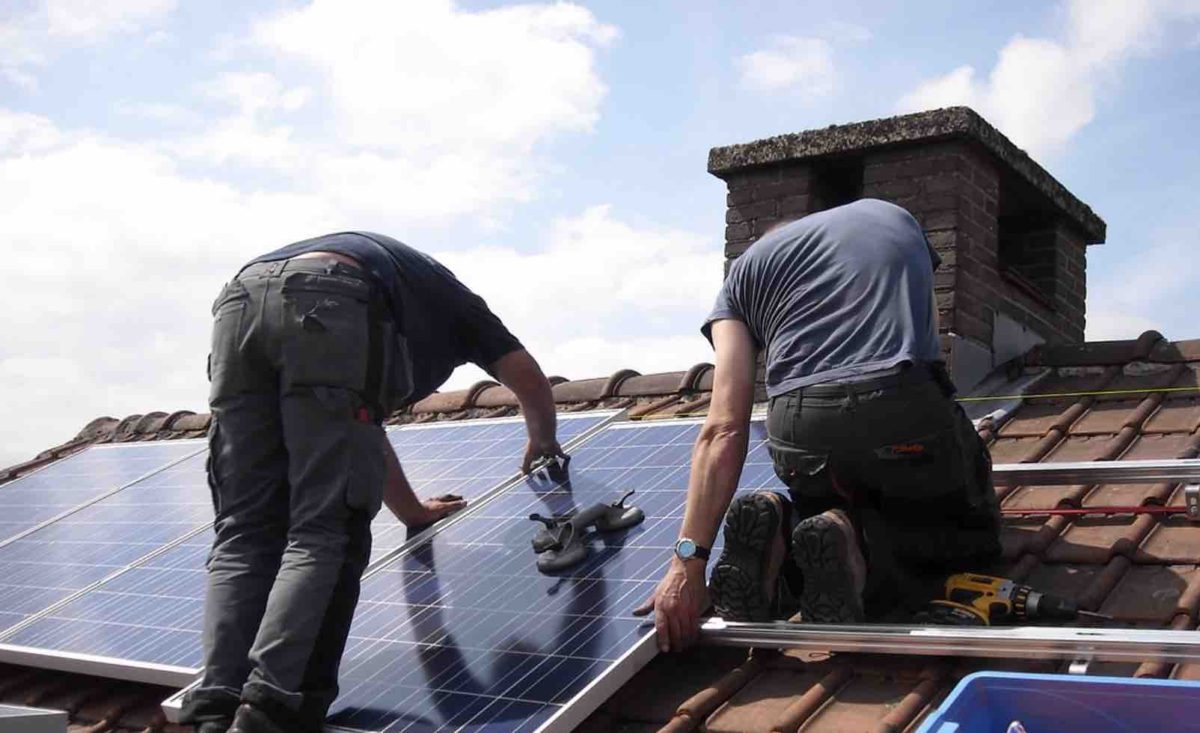
How to install and connect a solar geyser?
It depends greatly on the pressure type.
Low pressure systems
If you are already pretty handy, setting up a low pressure system can be pretty straight forward (if you are running a line direct from the unit into the house or cabin).
Connecting it to the house mains will be a different story due to the significant difference in overall water pressures (normally a much higher pressure that comes from the main lines). In this instance it would be better to get a professional.
High pressure systems
In just about all cases (unless you have the specific experience) it will be better to have a professional install a high pressure system.
This will be beneficial for home insurance purposes also (to make the system low/no risk).
Is it worth it?
Switching to solar geysers can be big energy and cost-saving in the long run. It’s not really a question of is it worth it, it is more when will it pay itself off?
Solar energy is renewable
As a seemingly infinite resource, the sun has the ability to power our lives. Switching to solar geysers is a great way to make the first steps towards a greener future.
In conjunction with reducing our water footprint, carbon footprint & waste, switching to solar is a great sustainable choice.
Financial benefit/payoff
While the solar geysers have a seemingly high initial cost, they do “pay themselves off”.
Overall, you can save 70% to 90% on your water heating bill using solar water heating systems. Depending on what country you are in the time it takes to “pay off” a solar heating system can be estimated as:
- Brazil (4 years)
- South Africa (5 years)
- Australia (7 years)
- USA (12 years)
- UK (18 years)
This will vary greatly depending on where in the country you live (warm/sunny places will pay off much quicker than cold cloudy places).
Like This Article? Pin it!
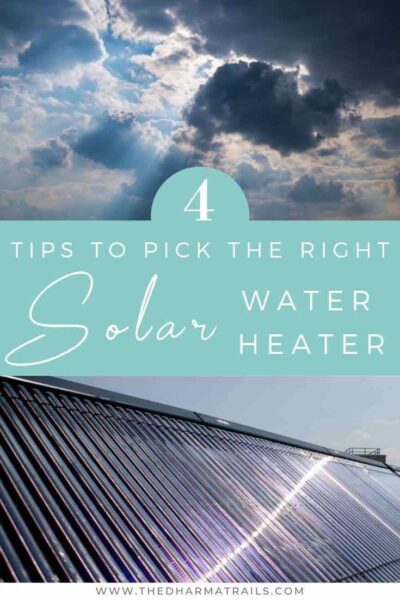

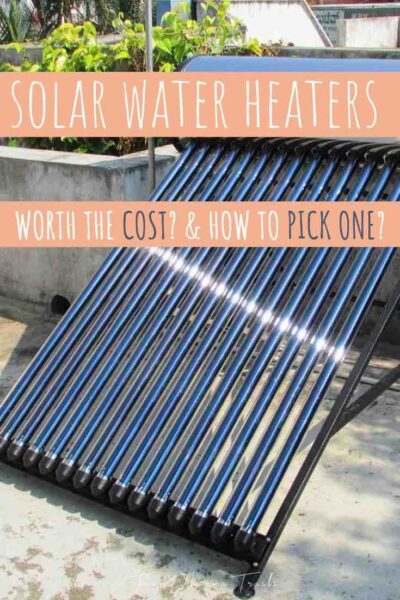

Aaron is one of the co-founders of The Dharma Trails. His background in marine eco tourism and writing have blended together to create the eco travel platform read by users around the world.



